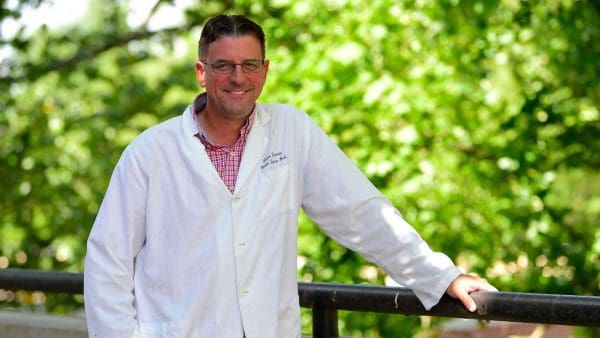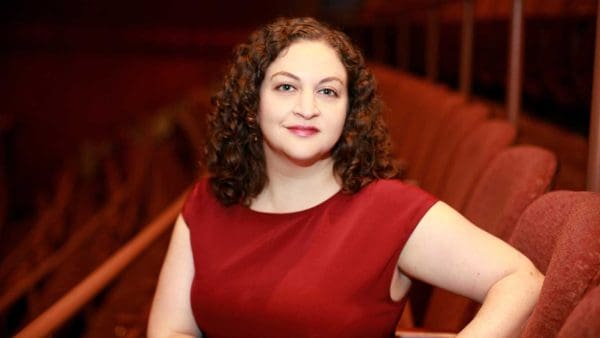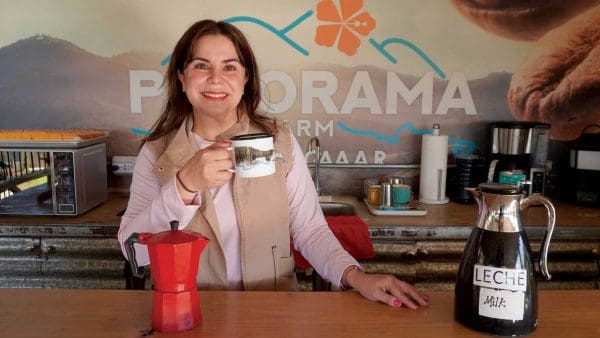What if pathogenic diseases, like sickle cell and Parkinson’s Disease, could be treated before they even appear? Nicole Gaudelli PhD ’13, Senior Scientist & Program Leader at Beam Therapeutics, tells us that state-of-the art gene editing technology can now alter base pairs in genomic DNA in this TEDMED 2018 Hive Talk.
Nicole Gaudelli PhD ’13 remembers the precise moment she decided to become a scientist. It was fifth grade. Her teacher sent the kids home with the old chestnut of an assignment: What do you want to be when you grow up? Gaudelli’s father, a chemical engineer, asked what her answer might be. “I replied that I wanted to be a doctor because I wanted to help people,” Gaudelli said recently from her home office outside Cambridge, Massachusetts. “He said, ‘Well, doctors diagnose people, but scientists cure people. They’re the ones who make the medicine. Why don’t you want to be a scientist?’”
The revelation hit her like a lightning bolt. “I never knew I could become a scientist because I never saw women scientists,” she says. The next day, she turned in a picture of a bubbling beaker and a self-portrait, her dark hair sporting a giant pink bow. “I really wanted the teacher to know the scientist was a girl.”
Last year, Gaudelli’s actual picture appeared in Fortune magazine’s 40 Under 40 list. As the director and head of gene editing technologies at Beam Therapeutics, a biotech firm that recently went public with a market cap of $1.3 billion, she uses the technology that she helped develop to radically change the way genetic diseases are treated.
Gaudelli never anticipated that she’d end up working in genetics. “I like to joke that I’m a distracted chemist living in a genome editing world,” she says.
She earned her PhD in chemistry while working in the lab of Craig Townsend, Alsoph H. Corwin Professor of Chemistry, where she focused on natural product chemistry, which looks at substances created through living organisms. She endeavored to answer one of the lab’s longest standing questions: how certain kinds of antibiotics, known as monocyclic beta-lactam, biosynthesize. Understanding that mechanism would allow scientists to reproduce them, but the answer had eluded many before her. For years, Gaudelli worked against the same challenge. “The most important thing I learned at Hopkins is how to persevere in the face of negative results. You learn something with every experiment,” she says.
The most important thing I learned at Hopkins is how to persevere in the face of negative results. You learn something with every experiment.”
—Nicole Gaudelli
One night, Gaudelli was working in the lab running a test when she received a result she couldn’t believe. She repeated the experiment multiple times to make sure. She fondly remembers what happened next: She took her Maltese puppy on a walk through Charles Village near the Homewood campus, and thought: “I’m the only person in the world right now who knows how monobactams are made.” She went in the next day and put her findings on the desk of Townsend. “He looked at it, smiled, ran his hands through his hair, looked at it again. I teared up.” The results were published in 2015 in a prominent paper in Nature.
It was during her ensuing post-doctoral work in the Harvard lab of David Liu that Gaudelli made another discovery that would result in a second article in Nature, and become one of the pillars around which Beam Therapeutics was founded. Liu’s lab focuses on genetics, and at the time, a scissor-like gene-editing tool known as CRISPR-Cas9 was capable of cutting genomic DNA, but inefficient at reverting single-letter misspellings, one of the most prevalent causes of human pathogenic disease. Many harrowing genetic diseases, like Parkinson’s, result from a point mutation, or a single-letter misspelling, in our 3.2 billion-base pair DNA sequence encoded by the four nucleobases A, C, G, and T. To fix single-letter, disease-causing mutations efficiently, “a pencil and an eraser” approach would be the optimal solution, Gaudelli explained during a 2018 TEDMED presentation, “not scissors and paste.” One of her colleagues in the lab, Alexis Komor, discovered a way to change C to T. Gaudelli tackled the challenge of creating a molecular tool that could change an adenine base (A) to a guanine base (G). This required creating a new enzyme because there wasn’t a protein with this activity found anywhere in nature.
Today, she is taking those academic discoveries and turning them into promising therapeutic tools. Gaudelli is currently focusing on sickle cell disease, and while she can’t offer a specific timeline of results owing to her company being publicly traded, she can say that she is “extremely excited about what the future will bring.” Given that Gaudelli is an inventor on numerous base editing patents, you can bet her picture will grace many future publications.




